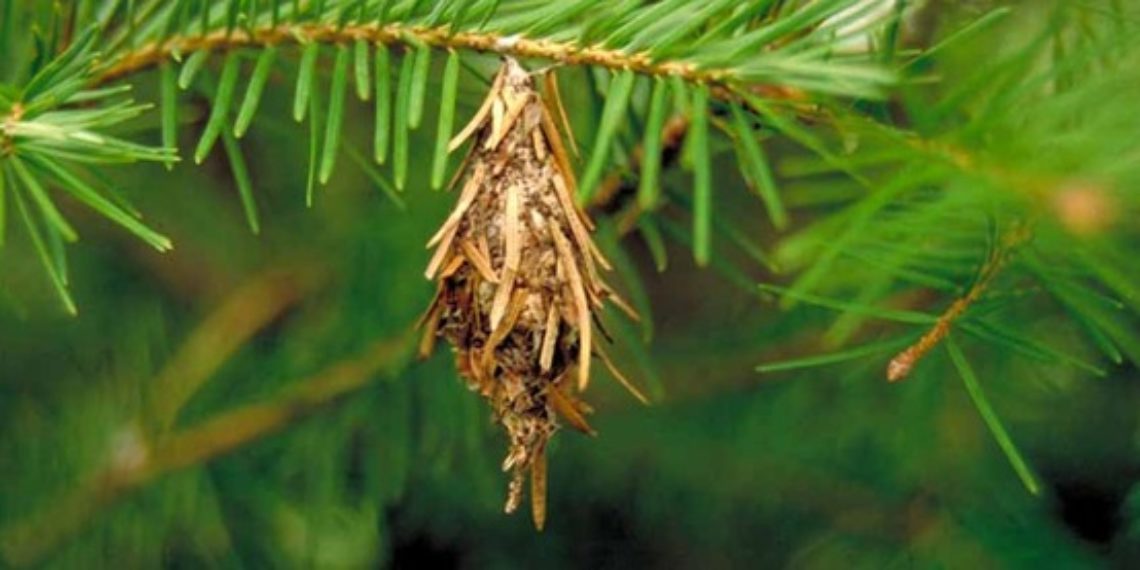Control Bag Worms
Thyridopteryx ephemeraeformis, commonly known as bagworms, will quickly destroy evergreens and shrubs when left untreated. Bagworms are small caterpillars that feed off needles and leaves, stripping plants of their foliage and causing trees and shrubs to die. Bagworms are easily identifiable by the 1” -2” spindle shaped sack they live in. The sacks are commonly mistaken for small pinecones as they hang from the underside of plant foliage.
Step 1: Starting by the first of July, begin inspecting evergreens for bagworms. If you find spindle shaped sacks covered with decaying foliage take immediate action before any further damage is done to the plants.
Step 2: Use scissors or pruning shears to remove as many bags as possible. Pulling them off by hand will tighten the silken string that attaches the bag to the branch causing the end of the branch to die.
Step 3: Rake up any plant debris or leaves from beneath the tree or shrub and around the surrounding area to help prevent future infestation.
Step 4: Use a tank sprayer or hose end sprayer to apply a mixture of water and Spinosad or Bacillus Thuringiensis, commonly referred to as Bt. Both Spinosad and Bt are a natural bacteria that affects leaf and needle feeding insects. Both are safe for use around humans and pets and can even be used on food crops.
Step 5: Continue to spray affected foliage weekly until all signs of active larvae have disappeared.
Step 6: If the bagworm infestation is aggressive and Spinosad or Bt does not seem to do the trick, there are several chemical products that can also be used to control bag worms. The most effective of these is Sevin, which comes in both a liquid and powdered form. Be sure to read the manufacturer’s instructions before applying any product to plants and vegetation.
